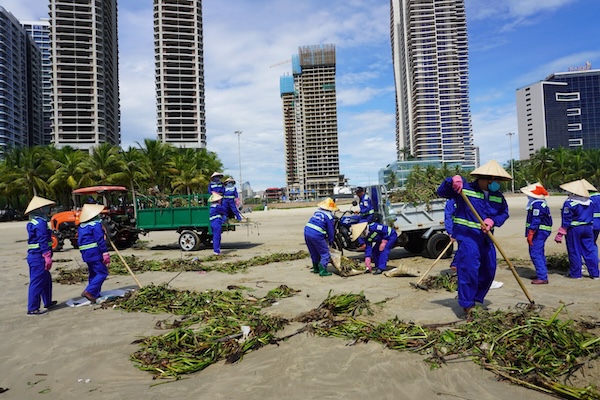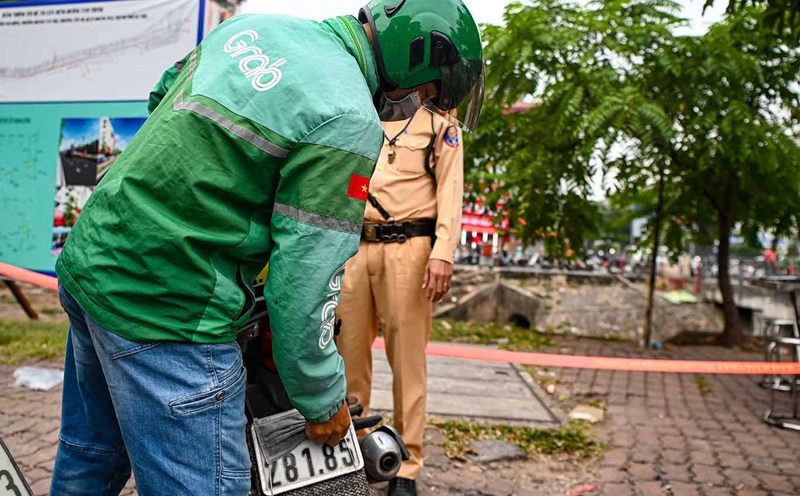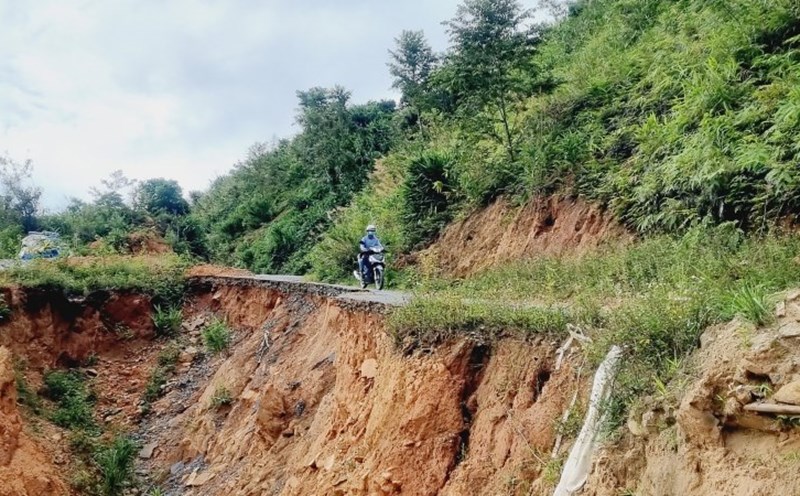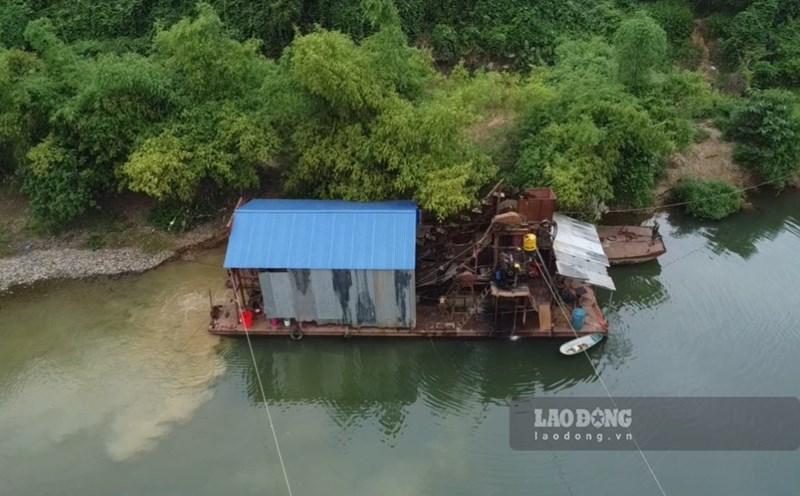Tons of garbage washed ashore after storm
During the recent Tra Mi storm (October 27), the Department of Natural Resources and Environment requested localities to closely monitor and strictly handle the exploitation of heavy rain to discharge waste causing environmental pollution, especially illegal discharge into sanitary protection areas and domestic water intake areas in the city. The Department of Natural Resources and Environment requested the Management Board of Da Nang High-Tech Park and Industrial Parks to direct the organization of close supervision of enterprises in industrial parks and high-tech parks, avoiding the exploitation of heavy rain to discharge waste causing pollution.
However, later, on October 28, a huge amount of waste was washed ashore on Nguyen Tat Thanh beach (Da Nang city), causing negative impacts on the landscape and threatening the marine ecosystem. The waste was mostly plastic waste, nylon bags, tree branches, old fishing nets... lying scattered for many kilometers along the coast. Some types of waste such as fishing nets, clothes were mixed in the sand, making collection difficult.
Mr. Nguyen Dung, a resident of Hoa My 2 residential area, Hoa Minh ward, Lien Chieu district, Da Nang city, said: "After each storm, on the beaches of Da Nang, there is a situation of plastic waste, duckweed, torn nets... floating from upstream to the Han River. Some of it is salvaged by the Da Nang Urban Environment Joint Stock Company, some of it floats out to sea and is washed ashore by the waves, causing pollution and losing the urban beauty. This is a situation that occurs regularly every year."
Previously, after the storm in September, Da Nang Urban Environment Joint Stock Company mobilized 100 workers and vehicles to collect all the trash along the coastline.

Taking advantage of storms to dump garbage and discharge waste into the environment
At the 6th People's Council meeting with voters on November 1, Mr. Pham Nam Son, Director of the Department of Natural Resources and Environment of Da Nang City, said that after each storm, garbage flows with rainwater and floodwater from the Vu Gia - Thu Bon river basin to the Yen river, Cam Le river and then to the Han river mouth. Second, from the Nam river, Bac river flows to the Cu De river and then to the Nguyen Tat Thanh estuary. Most of it is concentrated in the Lien Chieu and Thanh Khe districts.
According to Mr. Son, in the prevention plans before, during and after the storm, the People's Committee of Da Nang City assigned the Department of Natural Resources and Environment to collect garbage after the storm. This includes the task of collecting garbage at seaports and river mouths after the storm. The People's Committee of Da Nang City has also arranged funds to order the Da Nang Urban Environment Joint Stock Company to completely handle this situation. This is also partly related to the awareness of businesses located in the city.
"During storms, water from the Vu Gia - Thu Bon River flows into the Yen River, Cam Le River, then the Nam River, Bac River flows into the Cu De River, and businesses also take advantage of the opportunity to discharge waste and dump garbage. Therefore, localities need to strictly manage the production and business activities of businesses in the area. The waste dumped on beaches after storms often affects people and tourists, so the Management Board of Son Tra Peninsula and Da Nang tourist beaches, units under the Department of Tourism need to have a plan to propose annual budget allocation for waste collection after storms," said Mr. Son.











